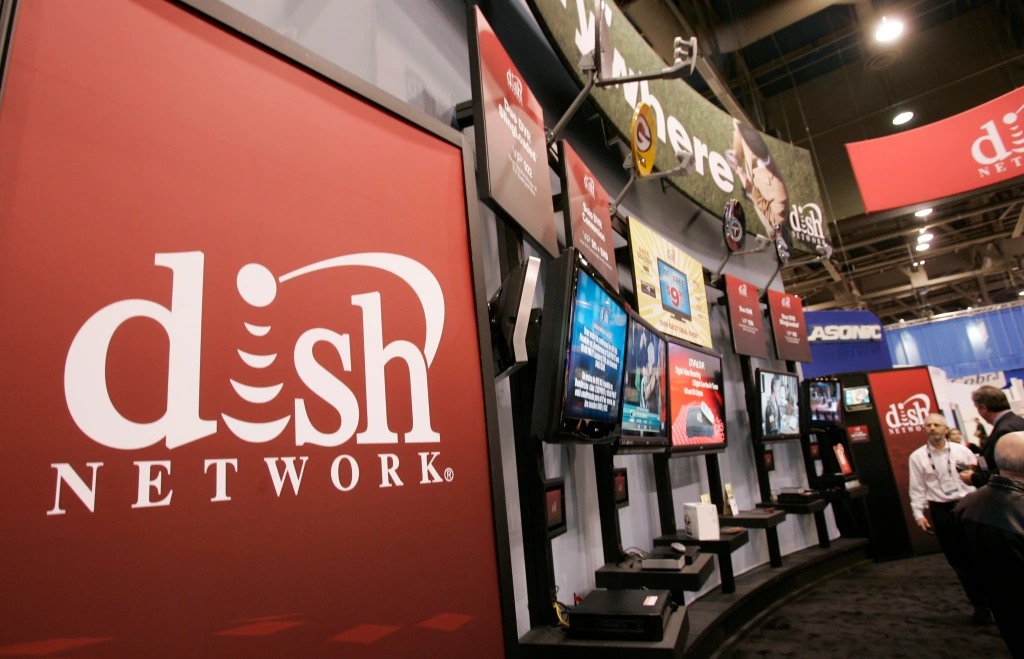Press Release
Dish Fcc Cdma Boost Mobile Fried Axios

Today, I am going to talk about the Dish FCC cdma boost mobile fried Axios. If you are not familiar with what that is, don’t worry because I am going to explain it in detail. First of all, let me just say that this phone is amazing! It has a lot of features that other phones do not have and it is very affordable. Plus, it comes with a free month of service! So if you are looking for a new phone, I would definitely recommend the Dish FCC cdma boost mobile fried Axios. Let me tell you some tips about it.
What Is Dish Fcc Cdma Boost Mobile Fried Axios
Dish Fcc Cdma Boost Mobile Fried Axios is a dish that is made by frying axios. The dish is usually served with a side of vegetables or rice. The dish can also be served with a side of bread. Dish Fcc Cdma Boost Mobile Fried Axios is a popular dish in many countries. Dish Fcc Cdma Boost Mobile Fried Axios is a simple dish to make and it is also a very healthy dish. Dish Fcc Cdma Boost Mobile Fried Axios is a dish that is full of flavor and it is also a very nutritious dish. Dish Fcc Cdma Boost Mobile Fried Axios is a dish that can be made in minutes and it is also a very cheap dish to make. Dish Fcc Cdma Boost Mobile Fried Axios is a dish that is full of nutrients and it is also a very filling dish. Dish Fcc Cdma Boost Mobile Fried Axios is a dish that will leave you feeling full and satisfied.
How Dish Fcc Cdma Boost Mobile Fried Axios Works
Dish Fcc Cdma Boost Mobile Fried Axios is a communication protocol that allows cell phone towers to communicate with Dish Network’s satellites. The system then routes the call through the satellite to the cell phone tower, which then connects the call to the Dish Network customer. Dish Network has invested heavily in this technology, and it is now the most widely used communications protocol for Dish customers. The company has also developed a number of other protocols that allow Dish customers to use their service on other devices, such as tablets and laptops. Dish Network is constantly striving to improve its service and offer its customers the best possible experience. Dish Fcc Cdma Boost Mobile Fried Axios is just one example of how the company is working to stay ahead of the curve.
Benefits of Using Dish Fcc Cdma Boost Mobile Fried Axios
Dish Fcc Cdma Boost Mobile Fried Axios is a great way to get your food cooked evenly. It also doesn’t stick to the pan like some other cooking methods do. You can use it to cook chicken, fish, steak, pork chops, and even vegetables. Dish Fcc Cdma Boost Mobile Fried Axios is also a healthy way to cook because it uses less oil than other methods. This means that you’ll save calories and fat grams. Dish Fcc Cdma Boost Mobile Fried Axios is a quick and easy way to cook your food. It’s also a great way to impress your family and friends with your culinary skills.
How to Use Dish Fcc Cdma Boost Mobile Fried Axios
Dish Fcc Cdma Boost Mobile Fried Axios is a great tool for anyone who wants to improve their Dish network reception. By placing the Dish Fcc Cdma Boost Mobile Fried Axios on your Dish receiver, you will be able to receive a stronger Dish network signal and enjoy better Dish network reception. The Dish Fcc Cdma Boost Mobile Fried Axios is easy to install and can be used with any Dish receiver. Simply follow the instructions included with the Dish Fcc Cdma Boost Mobile Fried Axios and you will be up and running in no time. With the Dish Fcc Cdma Boost Mobile Fried Axios, you will be able to enjoy better Dish network reception and improve your Dish network experience.
Top 5 Reasons to Use Dish Fcc Cdma Boost Mobile Fried Axios
Dish Fcc Cdma Boost Mobile Fried Axios is a revolutionary new product that can help you save time and money in the kitchen. Here are the top five reasons to use Dish Fcc Cdma Boost Mobile Fried Axios:
Dish Fcc Cdma Boost Mobile Fried Axios can help you cook multiple meals at once. With its unique design, you can cook two or more dishes at the same time, which means less time spent in the kitchen and more time for other activities.
Dish Fcc Cdma Boost Mobile Fried Axios is easy to use. Simply place your ingredients in the Dish Fcc Cdma Boost Mobile Fried Axios and let it do the work for you. There are no complicated instructions to follow; just set it and forget it.
Dish Fcc Cdma Boost Mobile Fried Axios is healthy. Because it uses no oil or fat, Dish Fcc Cdma Boost Mobile Fried Axios is a healthy way to cook your food. Additionally, its unique design means that there is no need to pre-heat the Dish Fcc Cdma Boost Mobile Fried Axios, so you can save even more time.
Dish Fcc Cdma Boost Mobile Fried Axios is economical. With its high-quality construction and efficient design, Dish Fcc Cdma Boost Mobile Fried Axios is an affordable way to equip your kitchen with a versatile cooking tool.
Dish Fcc Cdma Boost Mobile Fried Axios is backed by a 100% satisfaction guarantee. If for any reason you are not completely satisfied with your Dish Fcc Cdma Boost Mobile Fried Axios, simply return it for a full refund of your purchase price. No questions asked!
Conclusion
The Dish FCC CDMA Boost Mobile story is a complicated one, with many unanswered questions. However, what is clear is that there are serious concerns about how the sale could impact competition and consumers in the wireless market. Policymakers and regulators should take a close look at this deal before it goes through to ensure that American consumers don’t lose out.
Press Release
Sang Sultantoto

If you’re trying to find Moenime Then, this is where you can locate several sources that provide in-depth information.
BANDAR TOGEL – TOGEL ONLINE HONGKONG, SULTANTOTO
To those who play togel, particularly those who play togel in Hong Kong, this statement applies: TOGEL ONLINE INDONESIA & BANDAR TOGEL HONGKONG. Togel is a very popular game in Indonesia and is played frequently. SULTANTOTO was established to give you the time and space to play Hong Kong togel and handle payments.
https://sangsultan.asia/
BANDAR TOGEL – TOGEL ONLINE HONGKONG, SULTANTOTO
Sultantoto bandar SGP, which emerged in recent years and now serves as a togel marketplace for all Indonesian online togel players, makes it easier for players to engage in togel play wherever they may be.
https://sangsultan.asia/wap
Bandar Togel Online Direkturtoto Penyedia DIREKTUR TOTO
Link Alternate: https://rebrand.ly/direkturtoto01 | https://rebrand.ly/direkturtoto02 | Bandar Togel Singapore dan Togel Hongkong Versi Togel WAP
https://sangdirektur.co/wap/permainan/play.html?
loc=gvszgvt7
I hope the materials mentioned above are useful in providing you with knowledge about sung sultantoto. If not, you can contact me through the comments.
Press Release
Critical GitLab flaw permits account takeover by attackers

GitLab has patched a critical severity flaw that may have let remote attackers exploit hardcoded passwords to seize control of user accounts.
Both the Community Edition (CE) and Enterprise Edition of GitLab are impacted by the flaw, which was identified internally and is designated CVE-2022-1162 (EE).
During OmniAuth-based registration in GitLab CE/EE, static passwords were unintentionally set, which led to this vulnerability.
In a security advisory released on Thursday, the GitLab team stated that “a hardcoded password was set for accounts registered using an OmniAuth provider (e.g. OAuth, LDAP, SAML) in GitLab CE/EE versions 14.7 prior to 14.7.7, 14.8 prior to 14.8.5, and 14.9 prior to 14.9.2 allowing attackers to potentially take over accounts.”
In order to thwart such assaults, GitLab strongly advised users to update all GitLab installations right away to the most recent versions (14.9.2, 14.8.5, or 14.7.7).
We STRONGLY RECOMMEND UPGRADING TO THE LATEST VERSION AS SOON AS POSSIBLE FOR ALL INSTALLATIONS RUNNING A VERSION AFFECTED BY THE ISSUES DESCRIB
A code patch made two days ago reveals that GitLab removed the ‘lib/gitlab/password.rb’ file, which was used to give the ‘TEST DEFAULT’ constant a shoddy hardcoded password.
Some GitLab users had their passwords reset.
GitLab also stated that as part of the CVE-2022-1162 mitigation effort, it reset a select few GitLab.com users’ passwords.
Additionally, it did not discover any proof that any accounts had been compromised by hackers exploiting the hardcoded password security weakness.
As of 15:38 UTC, “We completed a reset of GitLab.com passwords for a chosen selection of users,” the GitLab staff stated.
Although there is no evidence to suggest that users’ or accounts’ security has been compromised, we are nonetheless taking precautions for our users’ safety.
A GitLab representative provided the information already included in the advisory with BleepingComputer when asked how many Gitlab.com users had their passwords reset, adding that they only did it for “a selected set of people.”
A programme to recognise affected user accounts
GitLab has developed a script that self-managed instance administrators can use to find user accounts that might be affected by CVE-2022-1162, despite the fact that the firm claims no user accounts have been compromised so far.
Administrators are urged to reset the users’ passwords after identifying any user accounts that might have been impacted.
GitLab claims that over 100,000 businesses utilise its DevOps platform, and it has over 30 million estimated registered users from 66 different nations.
Press Release
CCPA NEEDS STRONGER ENFORCEMENT, BUT “AUTHORIZED AGENTS” LIKE DONOTPAY CAN MAKE IT EASIER FOR CONSUMERS TO OPT OUT OF DATA COLLECTION (KAVEH WADDELL/CONSUMER REPORTS).

Understanding the five major aspects of HRM — Employees are not just part of your organization, they are your organization. To keep your business running smoothly, employees have to be managed efficiently and their needs have to be catered to.
-

 Apps1 year ago
Apps1 year agoWhy is Everyone Talking About Hindi Keyboards?
-

 Social Media1 year ago
Social Media1 year agoWho is Rouba Saadeh?
-

 Apps1 year ago
Apps1 year agoThings you need to know about Marathi keyboard today
-

 Apps1 year ago
Apps1 year agoStuck with Your default Bangla keyboard? Isn’t it time for a change?
-

 Games1 year ago
Games1 year agoTop 7 Popular Puzzle and Card Games for Relaxing Your Brain on Mobile, Featuring Solitaire
-

 Social Media1 year ago
Social Media1 year agoMati Marroni Instagram Wiki (Model’s Age, Net Worth, Body Measurements, Marriage)
-

 Entertainment1 year ago
Entertainment1 year ago12 Online Streaming Sites that Serve as Best Alternatives to CouchTuner
-

 Entertainment1 year ago
Entertainment1 year agoMovierulz Website: Movierulzz 2021 Latest Movies on Movierulz.com
